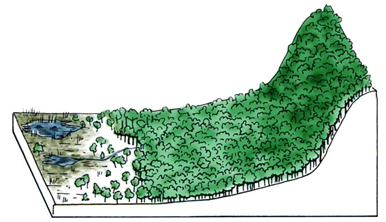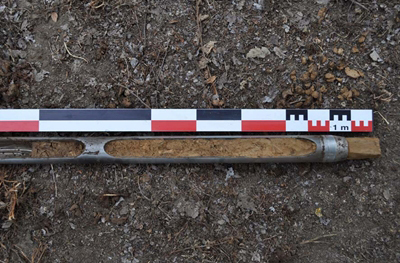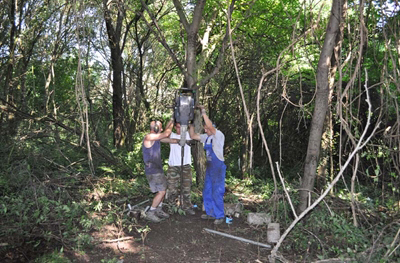The origins: evidence about The earliest occupation PHASES
 Our knowledge about the initial phases of human settlement at Dikili Tash does not come from excavations but from a series of core-samples taken on various parts of the mound in 1993 and 2010.
Our knowledge about the initial phases of human settlement at Dikili Tash does not come from excavations but from a series of core-samples taken on various parts of the mound in 1993 and 2010.
The first settlers arrived at the site during an advanced stage of the Holocene period, when a thick fertile soil (up to 0,80 m thick) had already formed above the last Pleistocene deposits. The spot was not really a natural promontory, but it would have appeared slightly dominant in relation to its surroundings because of the presence of two rather deep cuts on either side. This feature might have given it some topographical advantage.
The newcomers apparently settled themselves in the center of future tell, as indicated by the presence of anthropogenic colluvia at the base of the cores taken around the edge of the mound and also in the east and northeast parts, i.e. closer to the source of fresh water. In these spots, we have evidence of occupation layers in situ that have yielded chipped-stone tools. The C14 dates, showed that these layers date back to the second half of the 7th millennium BC. A little later, a rise in the level of the aquifer probably forced the residents to move temporarily to the center of the mound, before they spread throughout the area.



